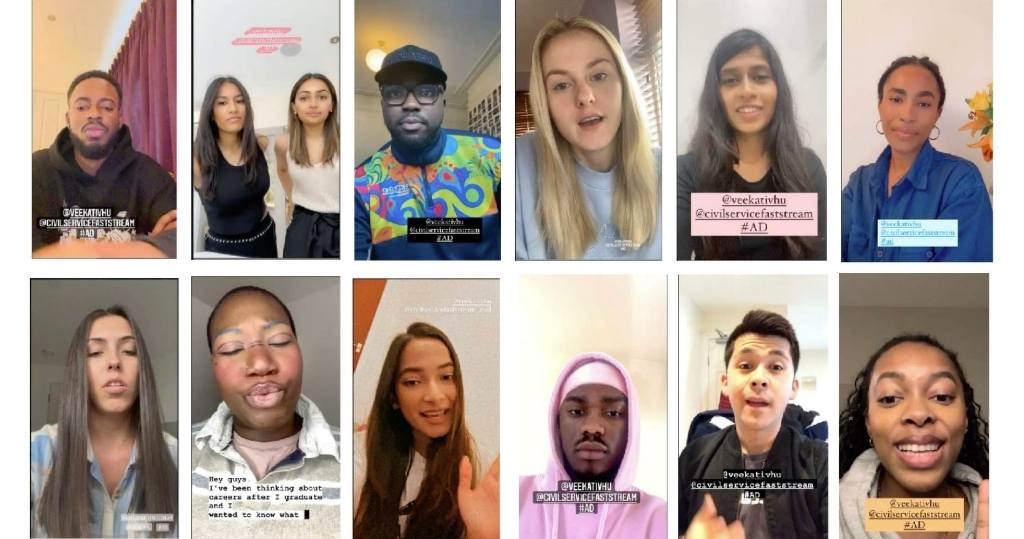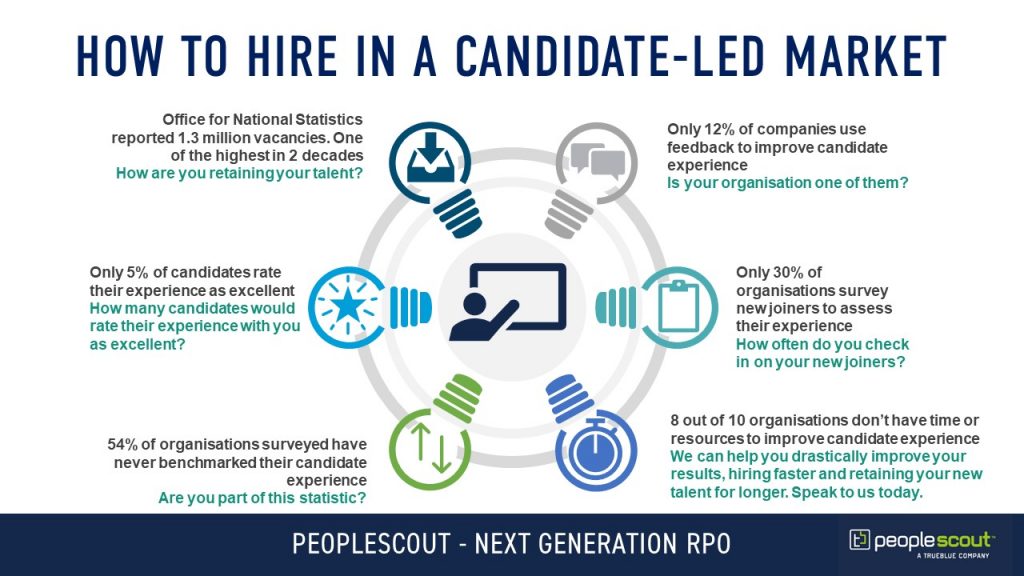As employees around the world quit their jobs in droves, the Great Resignation quickly became a global phenomenon and job openings across industries hit all-time highs. In order to keep up with this increasing demand for workers, employers are expanding their talent pools in a variety of ways, including searching across new geographies, considering workers who are changing careers, implementing innovative recruitment marketing techniques and more.
However, as a result of the Great Resignation, we’re beginning to see an alternative talent pool emerge: Boomerang employees—workers who voluntarily resign from your company and later rejoin. In this article, we’ll explain who boomerang employees are; the benefits and considerations of hiring them; and how to attract this unique group of talent.
Who Are Boomerang Employees?
Before you consider rehiring an employee who previously left your organisation, it’s important to understand the key differentiators that separate potential boomerang employees from permanent alumni.
As the term suggests, permanent alumni will remain just that—permanently separated from an organisation. These individuals likely stayed at the company for many years and had a good grasp of the organisation’s overall culture and values. However, at a certain point, these individuals decided that the company was not the right fit for them; this could be due to dissatisfaction with company culture, the need for a career change or any number of other work-related issues. Note here that a key factor in any of these reasons for leaving is an internal desire to resign.
Conversely, boomerang employees are more likely to have left a company quickly due to external factors, such as a sudden family emergency or an unexpected competing job offer that was too good to decline. So, while permanent alumni chose to leave because they were unsatisfied with the company in some way, boomerang employees are more likely to consider rejoining because they left for other reasons—none of which implied that they had an issue with the company in the first place.
“Five years ago, I chose to take a career break to raise my family. When the boys started school, I was ready to pick up my career again. As chance would have it, PeopleScout had identified a role working on a project supporting two big clients, and I was excited about the prospect of this new challenge. The company had changed a lot in the time I was away, so I was grateful for the in-depth introduction process and support from management and colleagues upon my return. The flexible working arrangement that PeopleScout offers means that I’m able to achieve the balance between working and looking after my family, which is fantastic. I’m happy to be back and am looking forward to developing my career over the coming years.”
Shelley Romero, Media Solutions Manager
PeopleScout UK
Meanwhile, some people may leave to pursue new opportunities because they’re unsatisfied in some way and are hopeful that the “grass will be greener” elsewhere. Then, if they find that isn’t the case, they may also be inclined to return to a previous company with a newfound appreciation.
“Due to business changes during the pandemic, I was assigned to a new client account and, after much time and consideration, I knew it just wasn’t the right fit for me. Though I did not want to leave, it was in my best interest to resign at that time. However, I stayed in contact with my previous manager and colleagues, and when an opening arose, they asked me, ‘Are you ready to come back home?’ It was never a matter of if, but when I was coming back. Everything needed to align—the right position, team and leadership. I was hesitant to return after my last experience that caused me to resign, but I knew what ‘home’ felt like, and I couldn’t be happier in my current position at PeopleScout!”
Alison Thompson, Senior Recruiter
PeopleScout
During the pandemic, the world was reminded how quickly life can change. Whether employees left your organisation to pursue other opportunities or to prioritise caring for their family, these types of employees create a whole new pool of talent that could be the perfect fit for your organisation. After some time has passed, many of these people could be on the job hunt again—and your organisation could serve as the right choice at the right time.
Benefits of Hiring Boomerang Employees
Rehiring former employees can present a variety of benefits for employers. Here are some of the biggest reasons to consider looking back at your previous hires:
Save Time & Money
Hiring a former employee reduces the hiring timeline and cuts down on overall recruiting costs. And, because these employees have previous experience working at your company, they will require less time and fewer resources to onboard and get up to speed to hit the ground running.
Eliminate Second-Guessing
Additionally, when you hire a former employee, you won’t have to wonder whether they’ll be a cultural fit; you already know how they fit in with the company and how they work with various people in the organisation—something that always remains a slight unknown when hiring someone completely new.
Gain Fresh Perspective
Former employees are unique in the fact that they have had some time to step away and see the organisation from the outside. Often, employees may have left to advance their career at another company and gain valuable skills. Then, when they return, they’ll be equipped with increased knowledge and experience to bring new ideas and insight into your organisation.
Boost Employer Brand
Rehiring employees also sends a positive message to existing employees and can improve an organisation’s employer brand overall. Specifically, by giving employees a second chance, it shows that the company is willing to bring people back and help them reach their potential—even if they previously left on their own accord. Furthermore, to existing employees (perhaps some of whom were considering leaving themselves), it shows that the company is worth coming back to, thereby leading to improved retention and employee satisfaction. Moreover, it demonstrates that leaving doesn’t have to burn bridges—especially when the company sees the value of the whole person.
Make Employees Happy
Plus, employees who left a job during the pandemic may now realise that they miss some aspects of their old company. Returning to a previous employer with new skills and a fresh perspective can mean higher pay, more growth opportunities and, in some cases, the ability to work from anywhere, which may not have been an option pre-pandemic. Consequently, these employees will likely be happy with their decision to return—leading to improved productivity for your organisation.
Questions to Ask Before Hiring Boomerang Employees
While there are many reasons to hire previous employees, that doesn’t always mean you should. So, before you decide whether turning back to a former employee is the right move for your organisation, keep these considerations in mind:
How Much Time Has Passed?
Account for how much time has passed since the employee initially left the company. For instance, an employee who left less than a year ago due to a personal emergency is more likely to be able to jump back in and get started than someone who left several years ago and has to learn new processes and technology.
Are They Adaptable?
Nowadays, change within an organisation can happen fast, and if the employee has been away from the company for a while, it can be helpful to consider their level of adaptability: Are they willing to learn new systems and procedures? Or, will they be stuck in old habits from their first tenure?
Are They the Best?
Amid a labour shortage, it can be tempting to settle for the easiest, quickest option to fill an open role. However, it’s important to think long-term: While this employee will cost less to hire and is a good cultural fit, are they truly the best person for the job? Consider whether this employee performed well in their previous tenure with the company, which is a good indicator of how they will fare the second time around.
Were They Missed?
While an employee’s individual performance may have been stellar, it’s important to understand their influence on the team. In particular, did they get along well with colleagues, or was it a relief for people when they left? When bringing back an employee, ensure that their return will have a positive effect on the productivity of the team as a whole.
Why Do They Want to Return?
Find out what made the employee choose to leave in the first place. Is that reason still going to be an obstacle moving forward? It’s important to ask what has changed since the time when they initially left. While familial or personal reasons would likely be resolved, you might have a bigger issue on your hands if they left because the company was not a good fit the first time. So, ask the former employee why they want to return. Then, if you’re looking for long-term talent, try to get a grasp of whether they’re ready to commit to your company for the foreseeable future. If they aren’t, you may have a permanent alumnus on your hands.
How to Keep the Door Open to Boomerang Employees
As the past two years have shown us, things happen—often unexpectedly. For one reason or another, people might be pulled in another direction and have no choice but to leave your company a little too soon. When this happens, it’s important to understand why they’re leaving and if there’s anything the organisation could have done to encourage them to stay. If not, perform exit interviews and get an idea of what is working and what can be improved upon in your organisation.
While some employees may choose to reapply to your company in the future, many former employees may never consider rejoining or even know it’s an option without first hearing from a former colleague or manager. In this situation, what’s the best way to reach out to these former employees?
To start, be sure to part on good terms. If the employee is one whom you would be eager to welcome back to your team again, make sure they know that when they leave. In today’s world that’s driven by social media, it’s easier than ever to stay connected across job changes. So, keep in touch with high-performing employees after they leave and proactively check-in with them when you’re ready to bring them back.
“Having former employees return to my team has been a true privilege. There is something about a second chance to help someone grow and develop and to be entrusted to help them achieve their career goals that is very special. I have the honour of having three boomerang employees on my current team. I am grateful that they rejoined and for the incredible know-how, passion and commitment that they bring to our team. I will continue to do all I can to support their success so that they can see their future here.”
Caroline Sabetti, Chief Marketing Officer, PeopleReady & PeopleScout
Senior Vice President, TrueBlue Communications
In addition, consider these three strategies for re-recruiting former employees:
1. Existing Employees
If you have an opening on your team and some of your existing employees still maintain relationships with former staff, your current team can be helpful in re-recruiting this talent. Let your current employees know you’d like to consider a former employee for the role and, if they’re willing, they can bring the idea up with the former colleague and encourage them to apply.
2. Direct Manager Outreach
For a former employee, it can be extremely powerful to hear directly from a former leader that the company and team wants them back. And, by hearing directly from a manager, the former employee is likely to take the offer seriously and understand that they are specifically who the team and leader want.
“I had the opportunity to work for our sister company Staff Management | SMX before leaving for another position outside of TrueBlue that allowed me to get specific experience in a different facet of marketing. After gaining valuable experience for a period of time with a different organisation, my former leader at Staff Management | SMX reached out to me to discuss an opportunity to join PeopleScout in a new role. I was thrilled to be able to rejoin TrueBlue and put to use the experience I gained outside of the company. Rejoining TrueBlue and joining PeopleScout was an easy decision due to the positive experience that I had during my original time with the organisation, as well as due to the ability to work directly for my former leader once again.”
Sarah Katz Candelario, Vice President of Marketing and Communications
PeopleScout
3. Email Campaign
If your company is looking to fill multiple roles at once, a larger campaign might make the most sense. This can include a list of all high-performing employees who left in the last year and serve as a check-in to see where they are in their career now and whether they’d be interested in taking on a new role in the company.
Beyond the Boomerang Employee
While looking to former employees serves as a strong new talent pool, it’s just one part of an organisation’s larger rehiring and retention strategy.
For example, in addition to traditional boomerang employees, the pandemic has also introduced an alternative group of potential employees—those who were furloughed. While these employees didn’t leave voluntarily, they can still be considered for boomerang status and serve as yet another talent pool to reach out to when needs arise.
But, in order for people to be willing to come back, organisations must ensure that their company is one that people want to return to (or, ideally, one they won’t want to leave at all). This means fostering a welcoming and empowering culture, as well as placing strong emphasis on growth and development of all employees.
In summary, when people feel valued, included and invested in, they’re less likely to leave your company for another. Then, even when human factors cause them to be pulled away, they’ll be willing and ready to return when the time is right.








